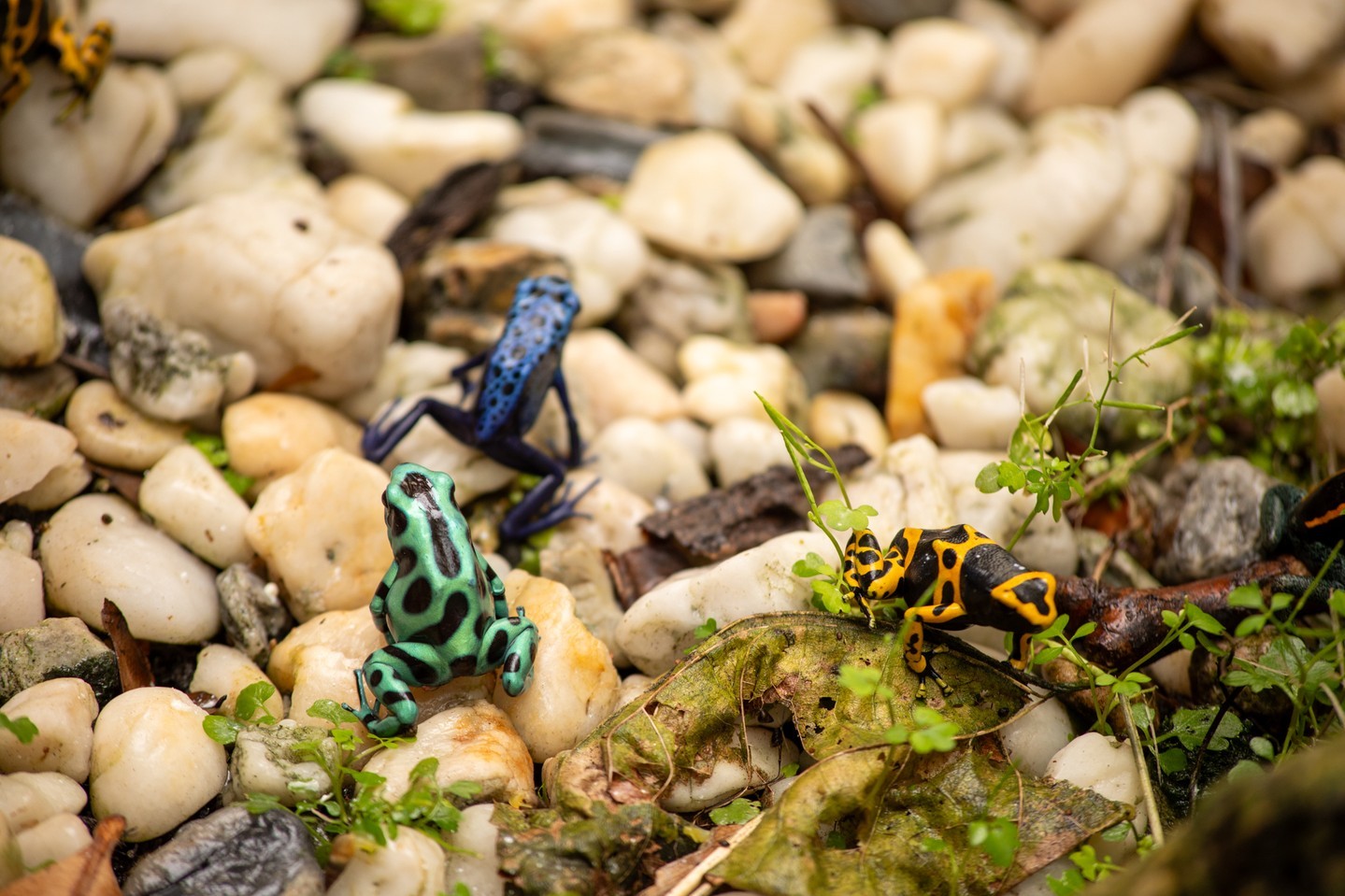Summary:
1. Introduction to poison dart frogs and their unique features.
2. Overview of poison dart frogs’ vibrant colors and patterns.
3. Discuss the toxic secretions and their significance in the frog’s survival.
4. Insight into the various species of poison dart frogs and their habitats.
5. Importance of conservation efforts to protect these fascinating creatures.
Game time! How many poison dart frogs can you spot in the second photo? Leave your answer in the comments!
Welcome to the mesmerizing world of poison dart frogs, where vibrant colors and toxic defenses rule! These tiny but astonishing creatures have fascinated scientists and nature lovers for centuries. In this article, we will delve into the captivating aspects of poison dart frogs, from their vibrant appearances to their crucial role in their ecosystems.
Vibrant Colors and Patterns:
One cannot help but be captivated by the stunning array of colors exhibited by poison dart frogs. These small amphibians boast an incredibly diverse range of hues, including brilliant reds, dazzling yellows, electric blues, and striking blacks. Their vibrant appearances serve as a warning to potential predators, signaling the presence of toxic defense mechanisms.
Toxic Secretions:
While the beautiful colors of poison dart frogs may seem inviting, they serve as a bold warning to predators: “I am toxic!” These frogs produce and secrete potent toxins through their skin, which can be fatal to predators if ingested or even touched. The most infamous toxin associated with poison dart frogs is batrachotoxin, considered one of Earth’s most powerful naturally occurring poisons. A single frog is estimated to produce enough batrachotoxin to kill 10 adult humans.
Species Diversity and Habitats:
Poison dart frogs belong to the family Dendrobatidae, which has more than 200 recognized species. These unique frogs can be found in various parts of Central and South America, particularly tropical rainforests, where they thrive in humid and moist environments. Each species has its distinctive coloration and pattern, making them easily distinguishable.
Conservation Efforts:
Due to deforestation, habitat destruction, and illegal pet trade, many species of poison dart frogs face significant threats. Conservation organizations and zoos play a vital role in protecting these fascinating creatures by establishing breeding programs, conducting scientific research, and educating the public about preserving their habitats. Efforts like these are crucial for the long-term survival of these beautiful creatures and the ecosystems they inhabit.
Conclusion:
The world of poison dart frogs is captivating, filled with vibrant colors, toxic secretions, and a delicate balance between survival and conservation. These fascinating creatures’ unique features and behaviors continue to amaze researchers and nature enthusiasts worldwide. By raising awareness and taking action, we can ensure these extraordinary creatures’ continued existence and preserve their natural habitats. So, the next time you encounter a poison dart frog, take a moment to appreciate the wonder it represents and the important role it plays in our diverse and fragile ecosystem.
*****
Source Description
Game time! How many poison dart frogs can you spot in the second photo? Leave your answer in the comments! 🐸🔍


